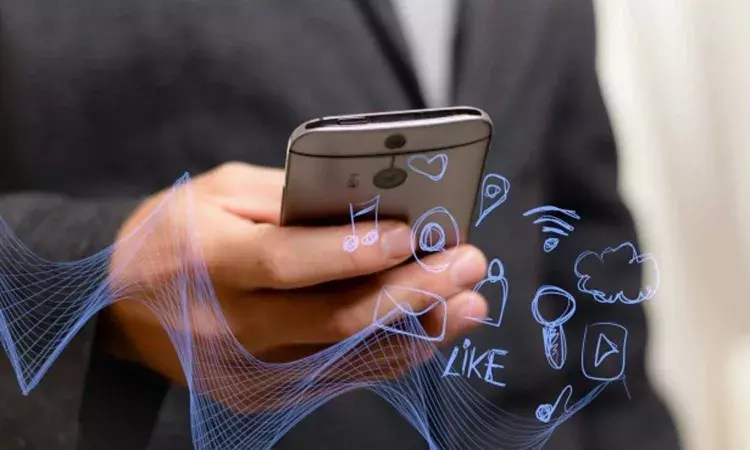- Home
- Medical news & Guidelines
- Anesthesiology
- Cardiology and CTVS
- Critical Care
- Dentistry
- Dermatology
- Diabetes and Endocrinology
- ENT
- Gastroenterology
- Medicine
- Nephrology
- Neurology
- Obstretics-Gynaecology
- Oncology
- Ophthalmology
- Orthopaedics
- Pediatrics-Neonatology
- Psychiatry
- Pulmonology
- Radiology
- Surgery
- Urology
- Laboratory Medicine
- Diet
- Nursing
- Paramedical
- Physiotherapy
- Health news
- Fact Check
- Bone Health Fact Check
- Brain Health Fact Check
- Cancer Related Fact Check
- Child Care Fact Check
- Dental and oral health fact check
- Diabetes and metabolic health fact check
- Diet and Nutrition Fact Check
- Eye and ENT Care Fact Check
- Fitness fact check
- Gut health fact check
- Heart health fact check
- Kidney health fact check
- Medical education fact check
- Men's health fact check
- Respiratory fact check
- Skin and hair care fact check
- Vaccine and Immunization fact check
- Women's health fact check
- AYUSH
- State News
- Andaman and Nicobar Islands
- Andhra Pradesh
- Arunachal Pradesh
- Assam
- Bihar
- Chandigarh
- Chattisgarh
- Dadra and Nagar Haveli
- Daman and Diu
- Delhi
- Goa
- Gujarat
- Haryana
- Himachal Pradesh
- Jammu & Kashmir
- Jharkhand
- Karnataka
- Kerala
- Ladakh
- Lakshadweep
- Madhya Pradesh
- Maharashtra
- Manipur
- Meghalaya
- Mizoram
- Nagaland
- Odisha
- Puducherry
- Punjab
- Rajasthan
- Sikkim
- Tamil Nadu
- Telangana
- Tripura
- Uttar Pradesh
- Uttrakhand
- West Bengal
- Medical Education
- Industry
Mobile phones and smartwatches safe for patients with implantable device: JACC

Germany: The use of contemporary mobile phones and smartwatches is not likely to pose electromagnetic interferences risk with cardiovascular implantable electronic devices (CIEDs), according to a recent study in the journal JACC: Clinical Electrophysiology. The clinicians should, however, be aware that their close proximity to implanted devices might affect the telemetry.
Electromagnetic interferences can be hazardous for patients with CIEDs and given the increasing prevalence of the use of mobile phone and smartwatch, Philipp Lacour, German Centre for Cardiovascular Research, Partnersite Berlin, Germany, and colleagues tested patients with CIEDs for the incidence and consequence of contemporary mobile phone and smartwatch-produced electromagnetic interferences.
A total of 148 patients with CIEDs and leads from 4 different manufacturers were subjected to 1,352 tests. CEIDs that were analyzed included 3 implantable loop recorders, 43 cardiac resynchronization therapy defibrillators, 46 implantable cardioverter-defibrillators, 5 cardiac resynchronization therapy pacemakers, and 51 pacemakers.
To analyze a possible influence of certain distances between the mobile phone (iPhone 6) and the smartwatch (Apple Watch A1553) to the CIED, both were placed either directly above implanted devices or at the right wrist. All possible activations of the iPhone and the Apple Watch, including the standby, dialing, and connecting modes (telephone connection and Internet access) were tested. In addition, the researchers studied the incidence and characteristics of interferences with interrogation telemetry.
Key findings of the study include:
- Only a single case of mobile phone–induced electromagnetic interference on a dual-chamber pacemaker was observed.
- Utilizing wanded telemetry, iPhone induced interferences were found in 14% of the patients.
- None of the patients showed any interference with the Apple Watch.
"The risk of electromagnetic interferences of the iPhone 6 and the Apple Watch with CIEDs is low. However, close proximity of the iPhone 6 to implanted devices can cause telemetry interferences," concluded the authors.
The study, "Are Contemporary Smartwatches and Mobile Phones Safe for Patients With Cardiovascular Implantable Electronic Devices?," is published in the journal JACC: Clinical Electrophysiology.
Dr Kamal Kant Kohli-MBBS, DTCD- a chest specialist with more than 30 years of practice and a flair for writing clinical articles, Dr Kamal Kant Kohli joined Medical Dialogues as a Chief Editor of Medical News. Besides writing articles, as an editor, he proofreads and verifies all the medical content published on Medical Dialogues including those coming from journals, studies,medical conferences,guidelines etc. Email: drkohli@medicaldialogues.in. Contact no. 011-43720751


